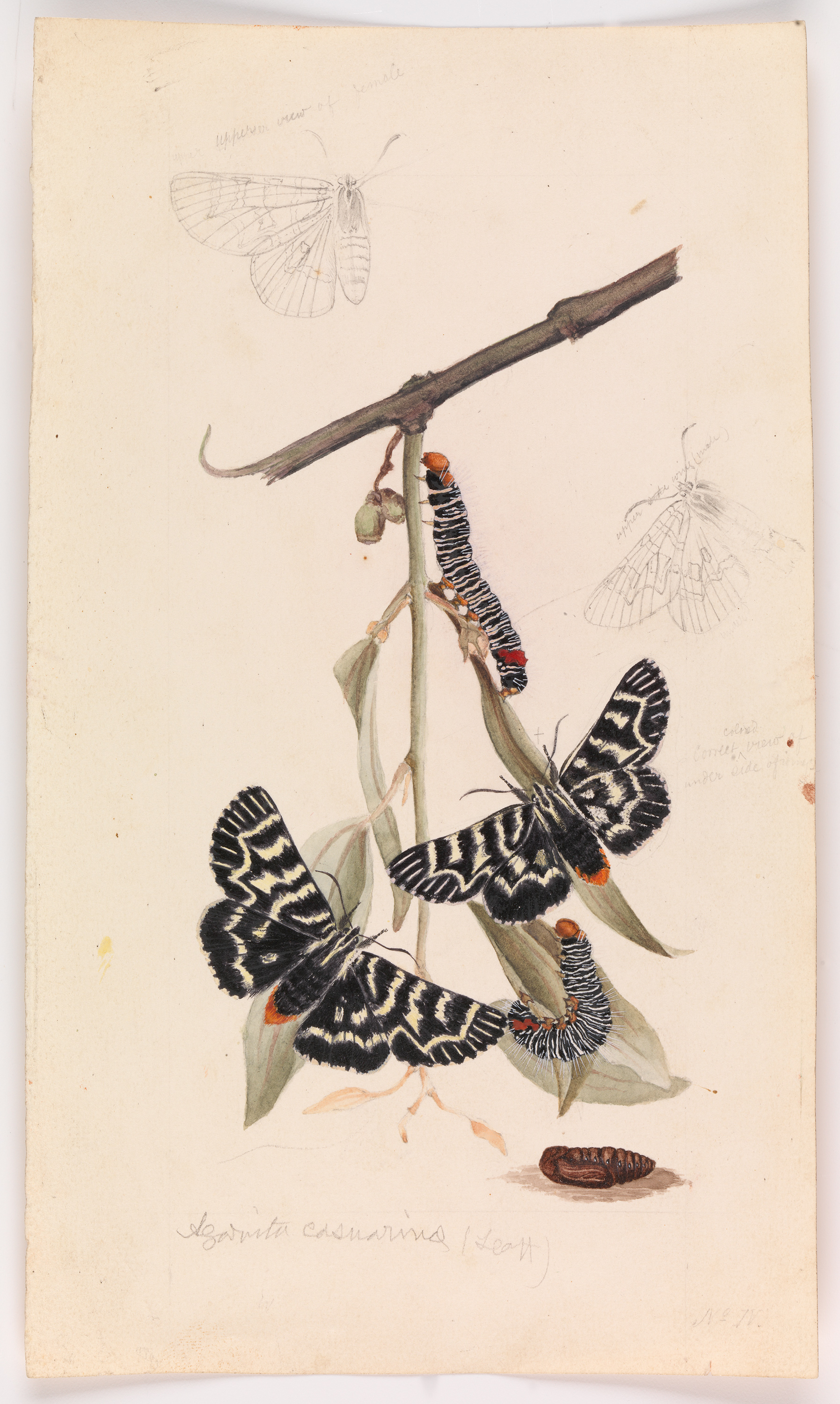Vine Moth, Phalaenoides glycinae
Plate 8, Figures 9-13. The Vine Day-moth, Agarista glycine (now known as the Vine Moth, Phalaenoides glycinae)
This species received its specific name from Lewin observing that in New South Wales the larvæ fed on the leaves of the leguminose plant, the Glycine bimaculata. In this colony, however, it is generally called the Vine-moth, from one of the most extraordinary changes of habit ever recorded in any insect. In the early day of this colony, before the introduction of the vine, the larvæ of this insect fed on the Gnaphalium luteoalbum, which is a very common weed, but since the planting of vineyards the Agarista glycine has increased enormously in numbers, and has totally abandoned its original food to devour the leaves of the grape vine, never now touching the former, but thriving and multiplying beyond measure on the foliage of so totally dissimilar a plant, that if the perfect female Day-moth be guided by ordinary instinct to choose that plant on which to deposit its eggs on which the larvæ might find suitable foliage for food (the perfect insect not only being deprived of jaws fit for eating leaves itself, but being separated from the foliage-eating larval stage of its existence by the intervening pupa stage, in which feeding, motion, and the senses are all stopped), it is not possible to conceive or understand how the egg-laying Day-moth could have gained such knowledge of the properties of the Vine as would induce if to abandon the natural food (not of itself, but) of its larvæ, and to put its trust in a foreign plant of which one might suppose it could know nothing.
The injury done to the vines in the extensive vineyards of Victoria by the larvæ of this species is enormous, and seems to be increasing. Their numbers are altogether too great to be dealt with by any other means than by hand picking, and there are not hands enough in the country yet for that, as the children by law must attend school. The Acclimatisation Society acclimatised the Indian Minah in the hope that, besides destroying the Grasshoppers and Locusts (which they do admirably), they might diminish this pest also; but they have unfortunately developed a taste for eating the grapes, and do not seem to like the larvæ of the Agarista. Before the new school law, children used to be employed thinning the numbers of the larvæ in an unpleasant but effective manner, by cutting each one across with a pair of scissors as they walked along the rows of plants, instead of delaying to pick them off. Even this sharp and decisive proceeding is too tedious to keep down their numbers, and, to add to the difficulty, the fowls even will not eat them, nor any other creature as far as I know. The only suggestion I can make is to employ hand-pickers at the time of the approach of the first brood of caterpillars, when the vines come first into leaf. Each one killed then prevents the formation of multitudes, as well as gives strength to the plant by their present removal. The next object of attention should be to kill all the moths of the first brood found on the wing, the figure here given rendering the right one easy of recognition, and this for each one killed will destroy myriads of eggs which would form the second brood.
